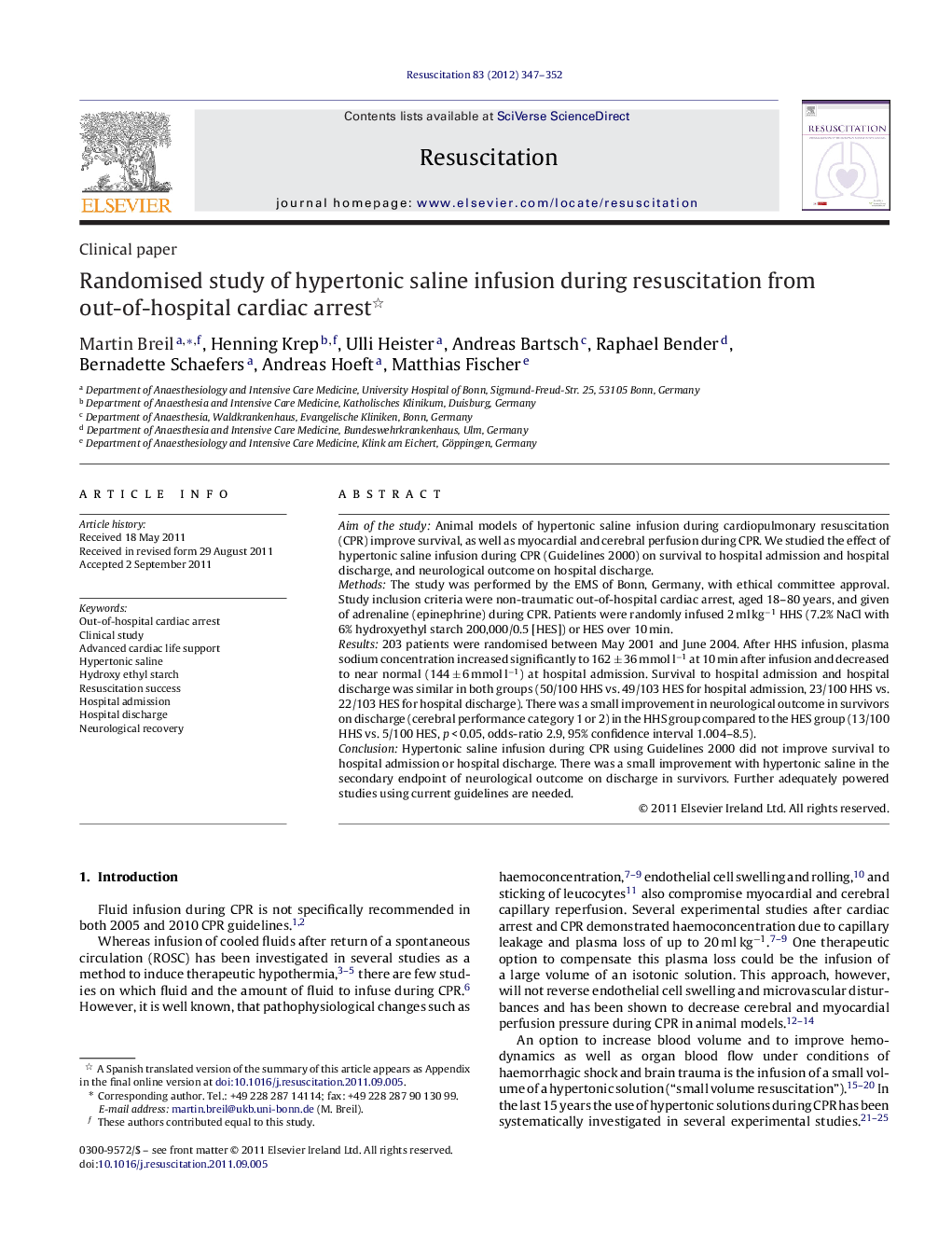| Article ID | Journal | Published Year | Pages | File Type |
|---|---|---|---|---|
| 3008439 | Resuscitation | 2012 | 6 Pages |
Aim of the studyAnimal models of hypertonic saline infusion during cardiopulmonary resuscitation (CPR) improve survival, as well as myocardial and cerebral perfusion during CPR. We studied the effect of hypertonic saline infusion during CPR (Guidelines 2000) on survival to hospital admission and hospital discharge, and neurological outcome on hospital discharge.MethodsThe study was performed by the EMS of Bonn, Germany, with ethical committee approval. Study inclusion criteria were non-traumatic out-of-hospital cardiac arrest, aged 18–80 years, and given of adrenaline (epinephrine) during CPR. Patients were randomly infused 2 ml kg−1 HHS (7.2% NaCl with 6% hydroxyethyl starch 200,000/0.5 [HES]) or HES over 10 min.Results203 patients were randomised between May 2001 and June 2004. After HHS infusion, plasma sodium concentration increased significantly to 162 ± 36 mmol l−1 at 10 min after infusion and decreased to near normal (144 ± 6 mmol l−1) at hospital admission. Survival to hospital admission and hospital discharge was similar in both groups (50/100 HHS vs. 49/103 HES for hospital admission, 23/100 HHS vs. 22/103 HES for hospital discharge). There was a small improvement in neurological outcome in survivors on discharge (cerebral performance category 1 or 2) in the HHS group compared to the HES group (13/100 HHS vs. 5/100 HES, p < 0.05, odds-ratio 2.9, 95% confidence interval 1.004–8.5).ConclusionHypertonic saline infusion during CPR using Guidelines 2000 did not improve survival to hospital admission or hospital discharge. There was a small improvement with hypertonic saline in the secondary endpoint of neurological outcome on discharge in survivors. Further adequately powered studies using current guidelines are needed.
